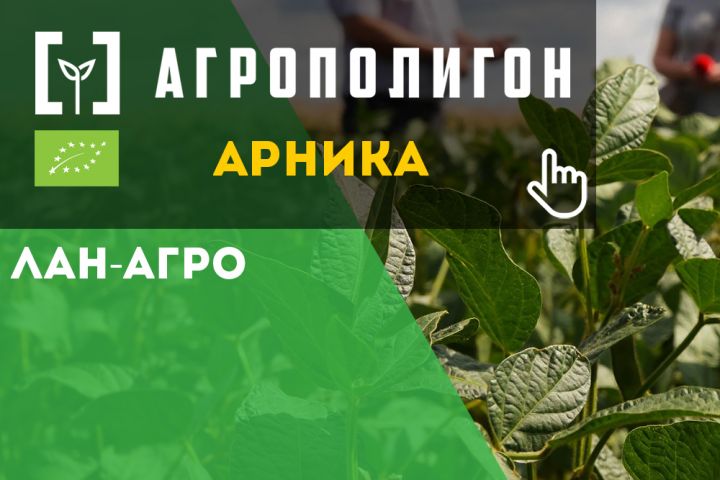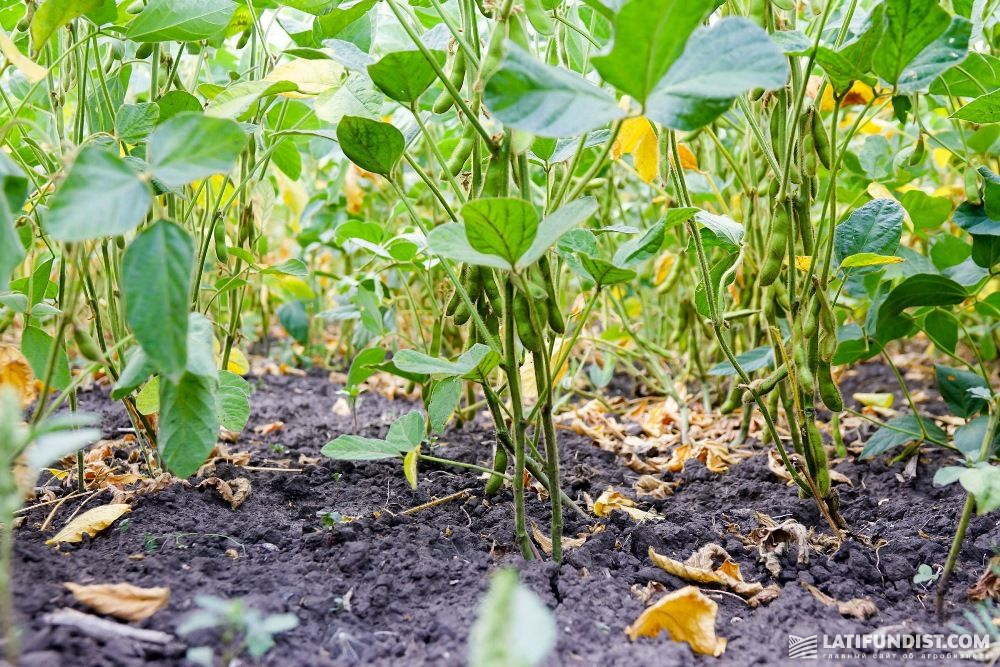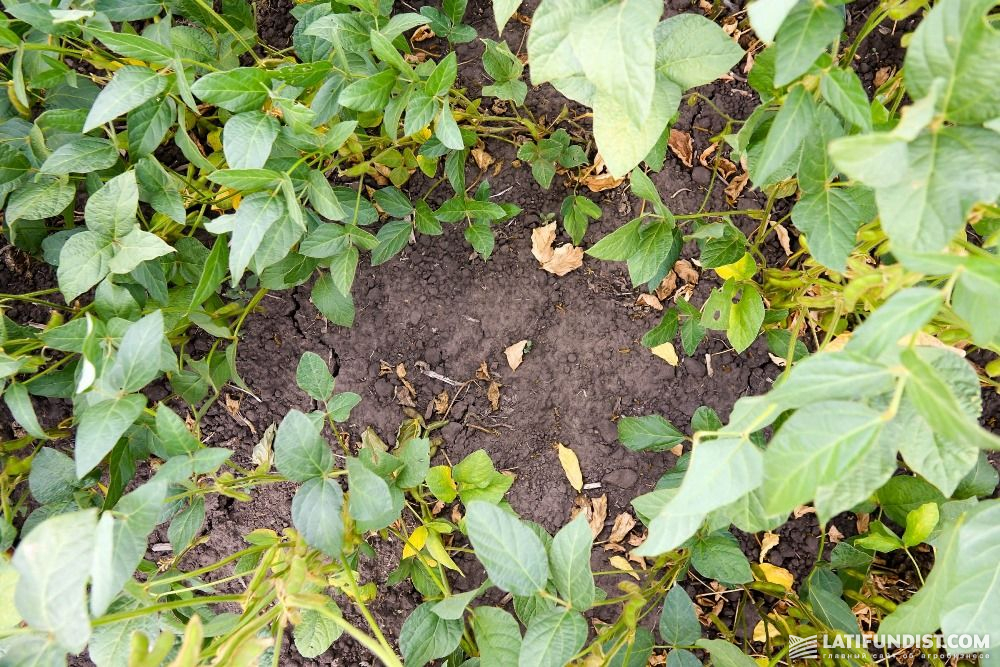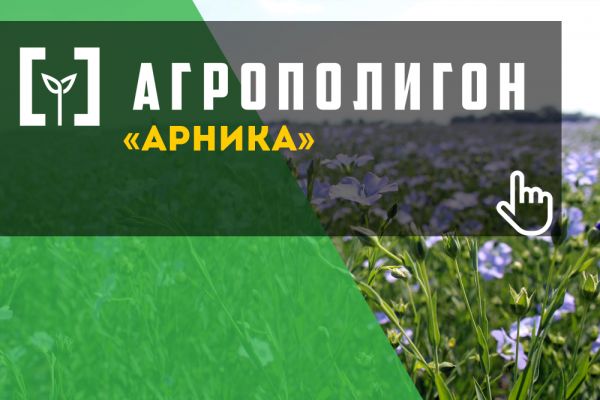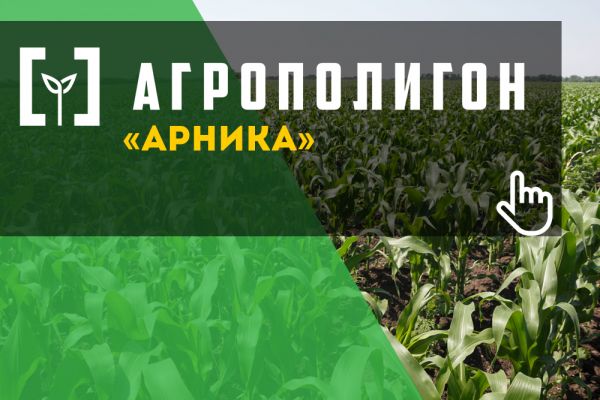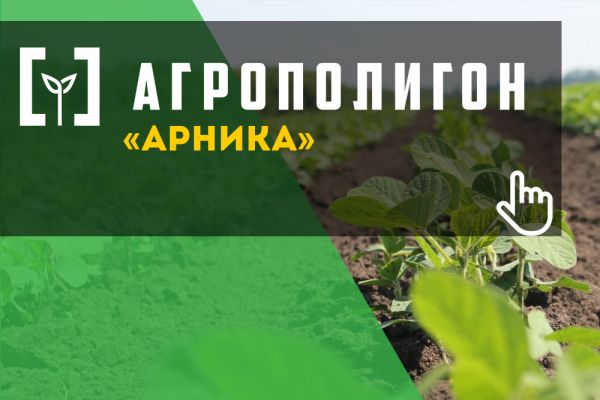AgroPoligon Arnika: Growing Organic Soybean
As part of AgroPoligon project, our team arrived in Lan-Agro, which is a structural division of the agro-industrial group Arnika, to learn about the technology of growing organic soybean and assess the results of such cultivation.
Therefore, we are riding through Lan-Agro farm fields, accompanied by Sergei Sereda, the chief agronomist of Arnika, and Vladimir Ivanyuk, the CEO adviser.
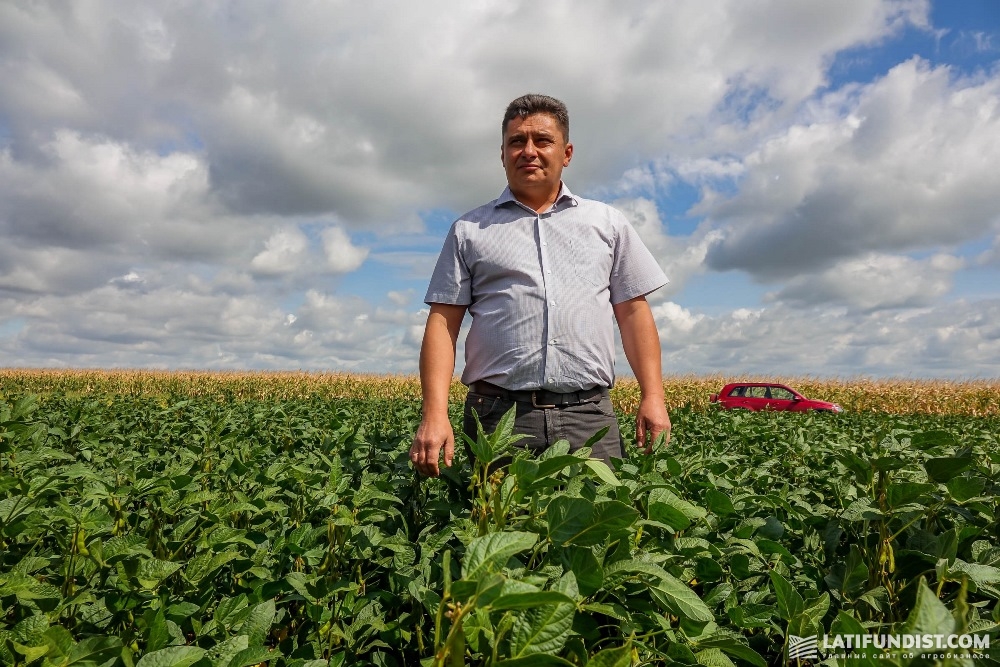
The focus is on soybean growing technologies
We quickly got to the field, which will be used to explore the technology of growing soybean in the farm.
The area of the field is 81.5 hectares and it is sown with Khorol variety soybeans.
This year weather conditions were difficult not only for soybeans, but also for other crops: in April the temperature was significantly low with night frosts on the soil, May was also not warm at all. Due to unfavourable weather conditions, the sowing was performed only at the end of May, while under more favorable conditions it could have been performed 10-14 days earlier. And in summer there was heat along with drought, and the amount of precipitation during the vegetation period was extremely low. With the average monthly norm of 45 mm, there was no more than 30 mm within two months. So as we can see, the conditions for soybean development were not the most favorable.
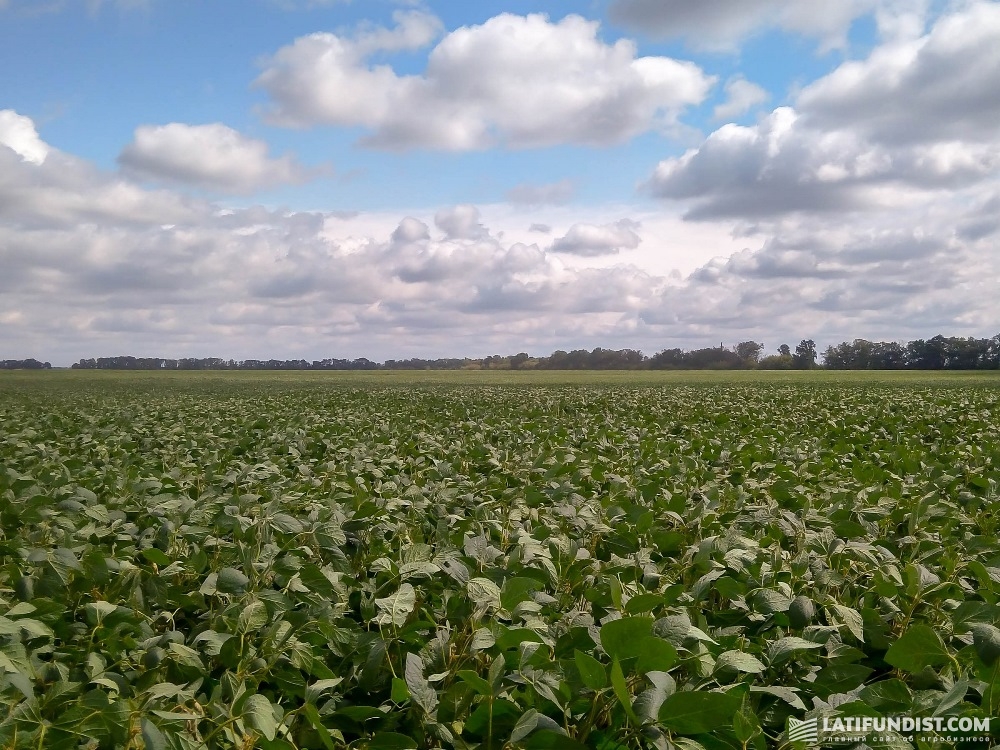
Seeds. The variety Khorol is an early ripe one. The vegetation period is 100-105 days. That is why we did not see the bright greenery on the fields as soybean is becoming yellow. "2-3 more weeks, says Sergey Sereda, and field will be ready for harvesting."
"Soybean varieties are selected primarily due to such parameters as resistance to stress factors and yield indicators. Resistance to diseases is especially important, because we can not fight them with fungicides. The Khorol variety demonstrated high results. It is resistant to pests and diseases, it is an early ripe one, and therefore releases the field early, which makes it a good predecessor for winter wheat. Moreover, it is high-yielding," says Sergey Nikolaevich.
He also says that the farm sows soybeans of various ripeness groups in order to optimize the harvesting and to redistribute the machinery workload efficiently.
Sowing on the field, which we inspect, was performed on May 27 with a seeding rate of 900 000 seeds/ha and with a row spacing of 38 cm.
"We prefer soybean varieties of determinant type. And such varieties require a certain space for good branching. We provide this space making large row spacing. Can you see how well the plants are branching?" explains the chief agronomist.
Before sowing, it is necessary to inoculate the seeds, for this purpose, the farm uses premium inoculant Legume Fix as recommended by the manufacturer (220-250 g per hectare seeding norm).
"Following all the rules of organic production, soybean should be returned to the field every 4 years in order to avoid accumulation of infections in the soil, which will prevent the diseases of this crop instead. That is why we always carry out the inoculation during sowing. We can not always comply with this rule, sometimes we have to return soybeans to the field during the third year already, but we do our best to optimize the crop rotation in order to fulfill this condition. For example, we are introducing new leguminous crops to the crop rotation: chickpeas, lentils. This year, we have also planted mash and lathyrus on the experimental plots. If we get the expected results, we will consider introduction of these crops into the basic crop rotation. Since our technology provides for the saturation of the crop rotation with legumes up to 50%, the addition of new leguminous crops will allow us to reduce the frequency of soybean return to the field and at the same time to comply with crop rotation," says Vladimir Ivanyuk.
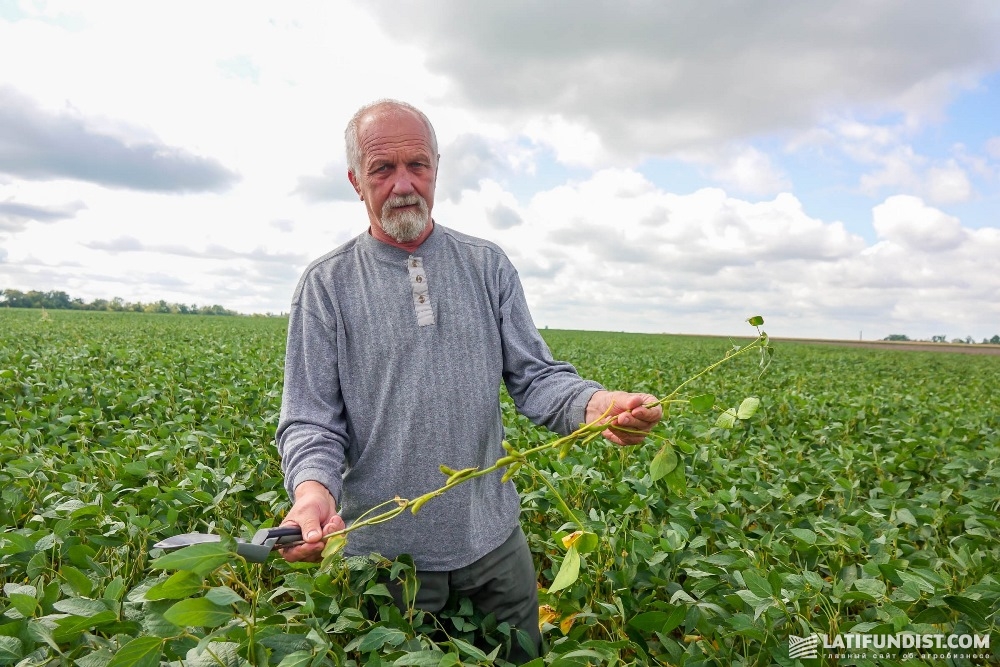
In this field the predecessor for soybean was corn grown for grain.
The processing technology included:
- plowing with a turnwrest plough after harvesting the predecessor crop in autumn;
- using harrowing to close the moisture in spring;
- 6 passes of a heavy spike tooth harrow;
- cultivation with a stubble cultivator;
- pre-emergence harrowing for destruction of weeds at the stage of a white string using a strigel;
- harrowing of sprouts was performed twice with strigel
- two interrow cultivations as weeds grow, with a cultivator for inter-row processing.
There are quite a lot of technological operations, but we should not forget that we are talking about organic cultivation. And although this field was not cultivated manually, it is clean.
At the same time weeds felt much more confident this year than the cultivated plants: the heat did not prevent them from developing. However, timely works on sprouting (inter-row processing and application of a strigel) did not leave the weeds any chances to suppress the cultivated crops. As for the pests, the heat partially restrained their reproduction. The number of damaged plants on the field is insignificant, there were damaged leaves, but this is not critical for the future harvest.
A special feature of crop cultivation on the farm is a regular examination of the state of fields with DJI Phantom 4 Pro quadcopter. 500 meters height of its ascent and the modern camera make it possible to examine large areas of Arnika fields and monitor the condition of the field and crops on the whole area, instead of its separate part. The information is further analyzed in the agronomical service department and the decision is made on the timing and the need for further additional technological operations. With the help of the quadrocopter, all important processes on the field are monitored: soil cultivation, sowing, harvesting, cleaning of equipment when moving from one field to another.
When the result of operation can be assessed visually
High plants with strong stems are full of pods. The signs of disease are not detected, which fully supports Vladimir Ivanchuk’s words on the corn field: "If the plant is healthy initially, it will not need any chemical."

We could not resist and counted the pods on several plants in different parts of the field. We got an average figure of 33 pods, each containing from 3 to 5 beans. Sometimes poorly filled pods can be found, but considering hot summer it would be surprising not to find them. The plants from Lan-Agro field have strong branched roots with a lot of bubbles with an encouraging bright pink color inside.
"I think this year we will get the minimum of 2.5 tons per hectare of harvest. The harvest could be higher, but despite the verified technology, we are not all-powerful and can not compete with the weather so far," says Sergei Sereda.
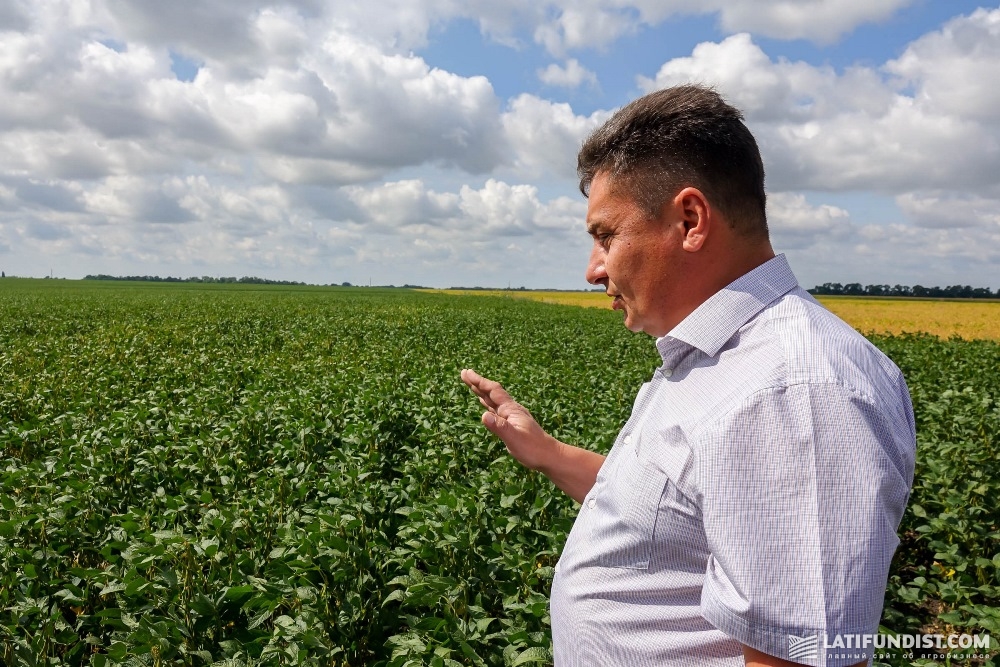
Having looked around, we noted that the farm carefully keeps spatial isolation of crops. And if there are soybean crops of other companies close to Arnika’s soybean field, they are separated from the company’s crops by buffer zones. So we could observe soybean of other farms only from far, but the difference between crops was vivid. So we wondered if the owners of neighboring farms asked Arnika for advice, and whether they were interested in the peculiarities of soybean cultivation. It was said that they were interested. And not only agronomists, but also machine operators receive questions, like: "What are you doing on the field now? And what will you do next?" Arnika willingly shares its experience.
Healthy seeds — healthy plants
On the way back, we quickly examine the fields of the neighboring farm, which is also part of the Arnika structure. Here, there are also seed crops besides commercial soybean crops. There are also experimental plots where the new selection varieties of the Institute of Organic Farming are tested.
"We select soybean varieties from the range of the Institute of Organic Agriculture, this is a reliable selection, and what is most important, it is regionalized, that is why the weather conditions can not affect the crops significantly. We always test and study the new varieties on experimental plots, look into all peculiarities personally. In order to successfully launch a variety in mass commercial production, it should be carefully studied it well and all "whims", if they exist, should be known," smiles the chief agronomist.
Seed sowing pleases the eye with strong high green plants, a large number of well-filled pods and complete absence of weeds. Vladimir Ivanyuk explains that manual labor was also used. After all, the company needs quality seeds, so weeds fighting is conducted by all available methods.
"Qualitative, healthy and strong seeds are one of the most important components of successful cultivation, and not only of organic one. And it is of a paramount importance in organic production, because we do not use chemical means of protection. Therefore, we must take care of the plants to be initially healthy, and not affected by infections," explains Vladimir Ivanyuk.
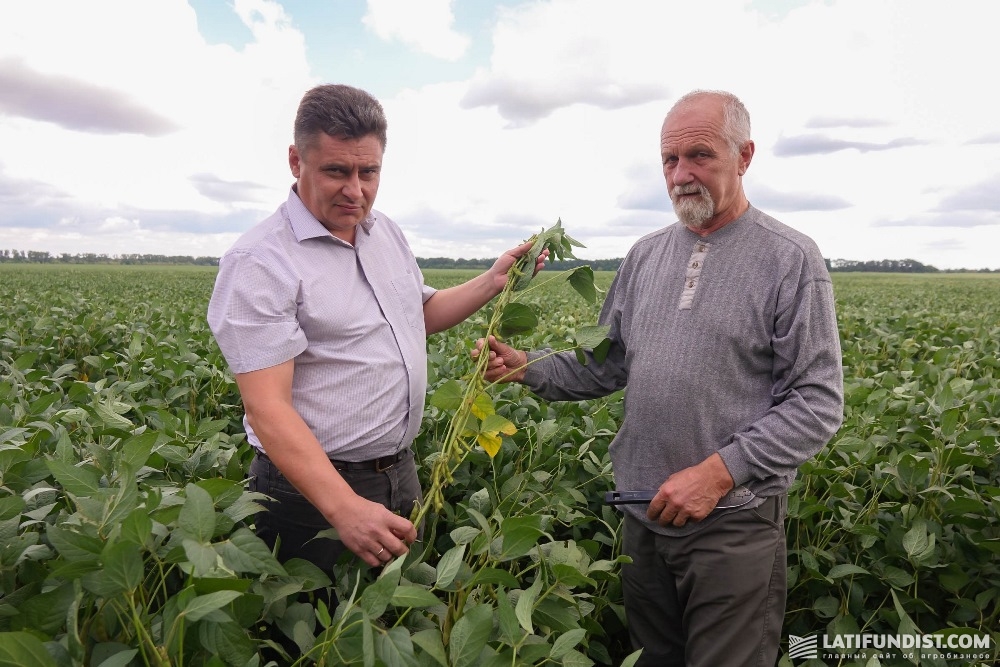
It's time to say goodbye to our hospitable hosts, but we will definitely come back to evaluate the results of growing soybeans within the framework of our AgroPoligon project and make sure that Sergey Sereda's forecast for the crop yield was true.
Elena Basanets, Latifundist.com


